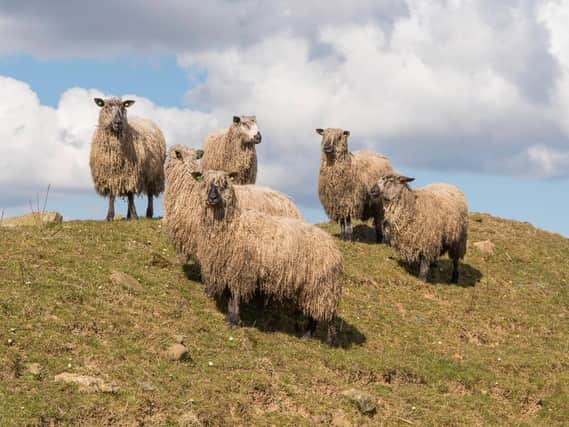A new campaign aims to save thethreatened Longwool sheep


Of the UK’s nine native Longwool sheep breeds, six were classified as vulnerable or at risk on The Rare Breeds Survival Trust (RBST) latest watchlist.
Chief executive of the RBST, Christopher Price, said that in general the Longwool breeds had seen a steady decline and some of the breeds now have very low numbers.
Advertisement
Hide AdAdvertisement
Hide AdThe watchlist, which was published last month, showed while there had been positive growth in the numbers of Greyface Dartmoors and Border Leicesters, other breeds such as Lincoln Longwool and Leicester Longwool had declined in numbers with only 251 Lincoln Longwool breeding females registered in 2019.
“Longwool sheep are striking animals thanks to features such as long fleeces and pricked ears,” said Mr Price.
“Their grazing encourages biodiversity on farms and their tasty meat and natural wool offer good commercial opportunities for their keepers. These breeds made a huge contribution to rural communities when the UK wool trade was booming and it would be devastating if they were to disappear from our landscapes now.”
Helen Wray who has a flock of 24 Wensleydale sheep at Gam Farm Rare Breeds said the wool was much sought after by crafters who loved the locks.
Advertisement
Hide AdAdvertisement
Hide Ad“It is lovely wool to spin and as it is long makes a very fine wool with a bit of a sheen to it. It is so fine it was used for ladies’ stockings.
“I started keeping them as I liked the look of them. They are a big sheep and really friendly.”
Mrs Wray said they were very good for conservation grazing and their flock was just fed on grass and meadow hay.
“They are slow growing which makes a good meat with better flavour, we supply a restaurant and they say the Wensleydale meat has a much better taste.”
Advertisement
Hide AdAdvertisement
Hide AdMrs Wray said the Longwool breeds were a great dual purpose sheep and should be conserved. She is planning to support the new campaign, called Love a Longwool, by donating all the profits from selling her fleeces.
As part of the conservation programme, RBST will be working with breed societies to increase diversity within each breed, making the Longwools as a whole more resilient. It will work to limit inbreeding through bespoke programmes and use conservation techniques to safeguard each breed.
The campaign will also promote the Longwool’s uses for wool, meat and conservation grazing, which encourages biodiversity and habitat regeneration.
Mr Price said it was not too late to secure the Longwool’s future.